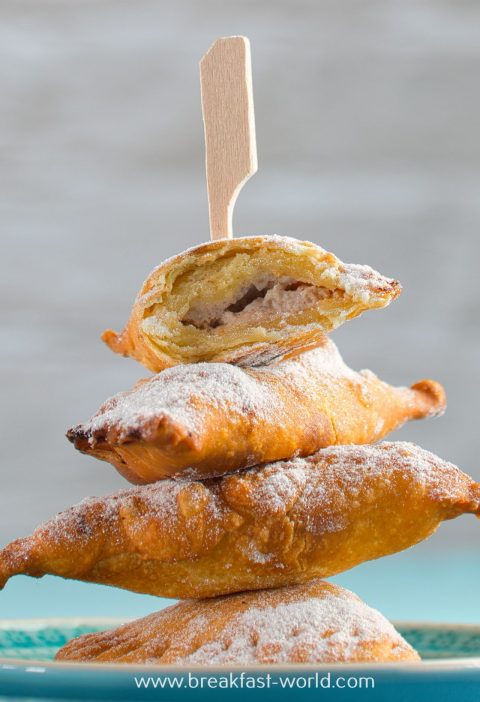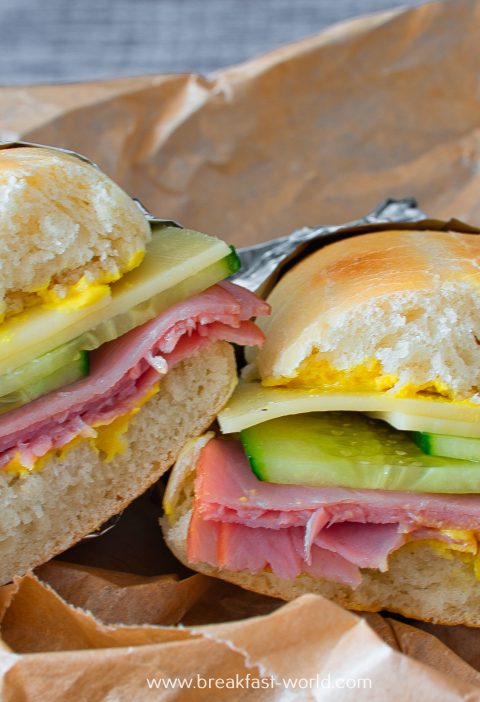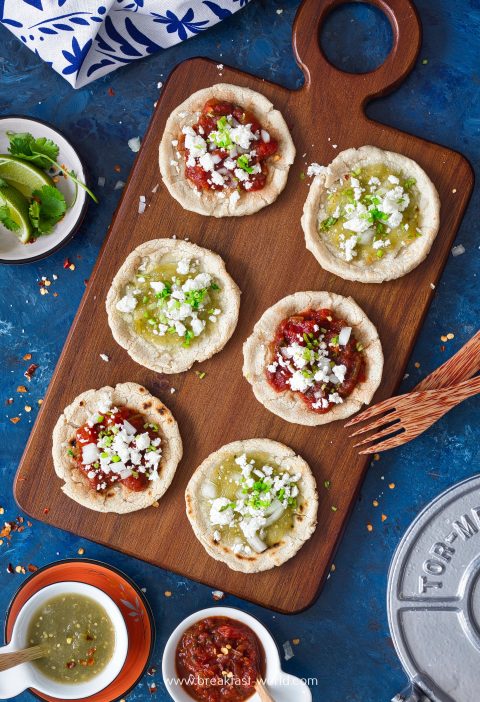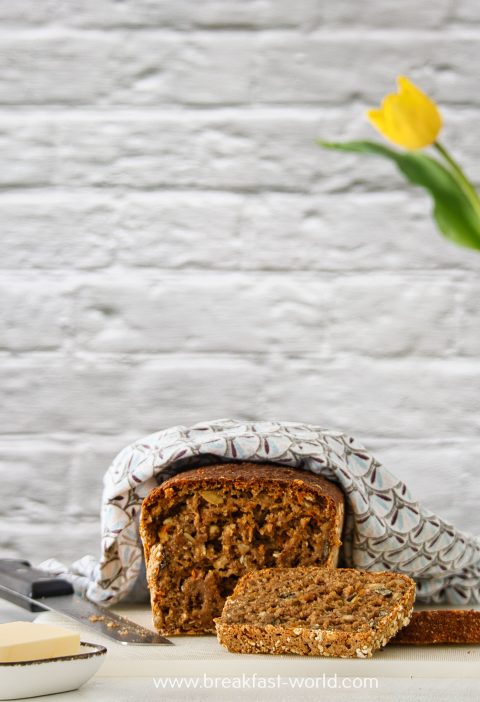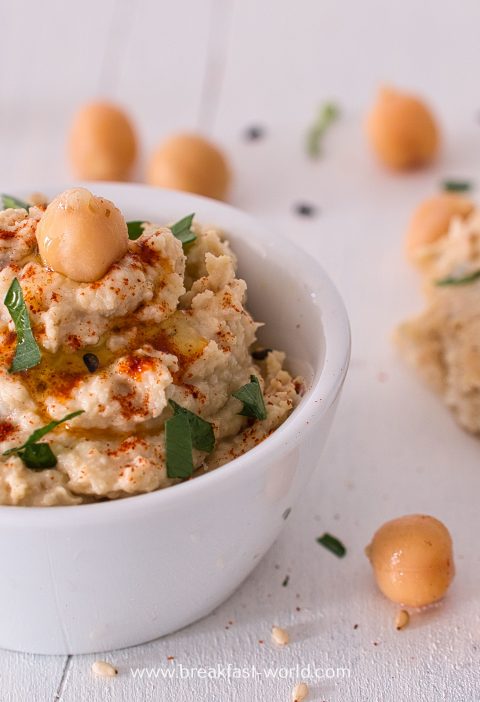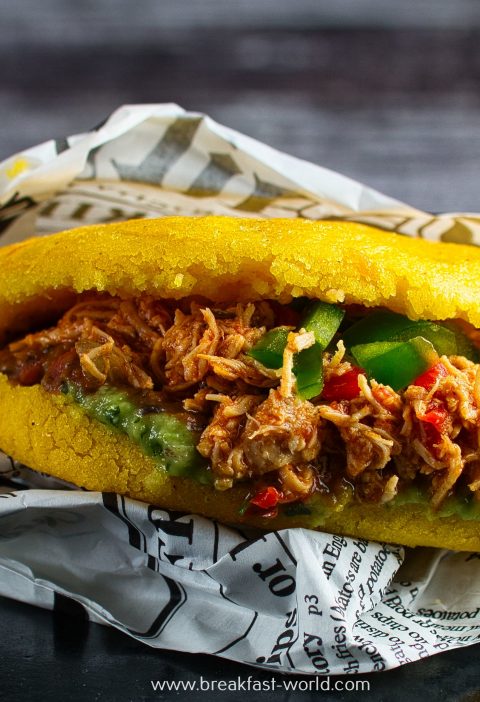Khao Neow Sang Kaya is a typical Thai street food dish that can also be eaten for breakfast. It consists of steamed sticky rice topped with a sweet egg and coconut cream.
However, before you will learn more about Khao Neow Sang Kaya, some general words about Thai cuisine and breakfast in Thailand.
Jump to RecipeThai cuisine
Thai cuisine is rightly known and loved all over the world.
Street-Food
Thai food tastes best at street stalls and night markets. Here, you can also discover all sorts of unusual specialties.


Basics
Thai cuisine impresses with its diverse and intense flavors. Almost all dishes include fresh herbs and spices such as lemongrass, galangal, kaffir lime leaves, coriander, basil and mint.
The market vendors offer countless types of fruits and vegetables .


Another very important element of Thai cuisine is Chilli. Some dishes are really spicy as hell. However, in many cases, coconut milk and sugar harmoniously balance out the spiciness.
Also fish sauce and shrimp paste play a central role in Thai cuisine. They give the dishes their characteristic spice.
The typical side dish for almost every meal is Rice (similar to our bread or potatoes). The best-known varieties are jasmine or fragrant rice and sticky rice (Thai: Khao Neow). The latter is also the basis for today's breakfast recipe Khao Neow Sang Kaya.
Rice noodles are also very common. The well-known classic Pad Thai consists of fried rice noodles.
Currys
Curry dishes are very popular. Thai curries not only contain a lot of vegetables, but often also meat or fish. The most famous are green, red, yellow and massaman curry. Each type of curry has its own blend of spices and herbs. Some curries such as green curry are relatively spicy,
others (e.g. yellow curry) taste much milder.
Soups
Soups and stews with noodles, vegetables, meat or fish are another characteristic of Thai cuisine.


By the way, you can also find delicious soup recipes from Southeast Asia on my blog, specifically in the posts about Laos and Vietnam.
Salad
Fresh salads are an integral part of Thai cuisine. Most of you probably know the delicious green papaya salad (Som Tam).
Me, personally I favor Laab, which consists of fried (poultry) minced meat, plenty of fresh herbs, and a light aromatic dressing.
Also at the top of my hit list is glass noodle salad with chopped chicken and lots of fresh herbs.
Breakfast in Thailand
Basically, there are no typical breakfast dishes in Thailand. Unlike in western countries, where different foods are served for breakfast than for lunch or dinner, in Thailand, the same dishes are eaten throughout the day. There are also no fixed meal times.
However, there are some foods that you like to eat in the morning.
Savory dishes
Chok (or: Jok) is a rice porridgethat is widespread in Thailand. It is the Thai version of Chinese congee. In addition to an egg, Chok also includes minced meat or meatballs and vegetables. Fresh herbs such as ginger, coriander and spring onions add additional flavor.
By the way, you can find a delicious recipe for chok or congee respectively on my blog in the article about Hongkong.
Khao Tom is a thin rice soup with pork, chicken or shrimp and egg. The soup gets its special flavor from lots of fresh herbs and spices such as coriander, spring onions, garlic and ginger. If you like, you can also season with soy sauce and dried chillies.
Also Omlette is often on the morning menu in Thailand. Actually, I'm not a big fan of omelets. For me it tastes boring. The Thai omelette (Kai Jeow) is a positive exception due to the ingredients. The eggs are usually accompanied by shrimp or minced meat, onions and lots of vegetables. It gets its special flavor from fish sauce.
Many street stalls sell marinated and grilled (pork) skewers in the morning (Khao Neow Moo Ping).
Very popular and authentic are Khao Rad GaengKhao Rad Gaeng. This is a more or less large selection of different curries and side dishes that are available freshly prepared all day long in many street stalls. You can choose several dishes according to your taste. You also get a large portion of rice.

Sweets
Snacks and (sweet) desserts are also very popular for breakfast in Thailand. In Thailand they are called Khanom. Sweet desserts are called Khanom Wan.
Pa Thong Ko are a type of donut that are fried crispy golden brown on the outside and very fluffy on the inside. They taste very good with sweetened condensed milk.
Khanom Buang are also called “Thai Crispy Pancake” or “Thai Taco”. These are wafer-thin, crispy pancakes made from rice flour, tapioca flour and coconut milk. The crispy “shells” are traditionally filled with a mixture of sweet egg white (Foi Thong) and coconut cream (Foy Thong). Sometimes toasted coconut flakes or sesame seeds are also added.
My absolute favorite dessert which I could eat every day for breakfast, lunch and dinner is Sticky Rice with Mango:
Khao Neow Sang Kaya
Khao Neow Sang Kaya is at least as delicious as sticky rice with mango. It is a traditional Thai street food dish that is also made with sticky rice.
White or black sticky rice is cooked in coconut milk and then topped with a small portion of sweet coconut egg cream. It is served in a “package” made from a folded banana leaf.
Khao Neow Sang Kaya tastes good both warm and cold.
Cooking this dish is incredibly easy. You only need a few ingredients, which are also easily available in weatern countries.
While sticky rice is steaming, the cream which consists of coconut milk, (palm) sugar, a pinch of salt and eggs is prepared. The mixture will be steamed as well.
It is important that the cream steams evenly over low heat. Otherwise there is a risk that it will curdle or form lumps. The cream is ready when you stick a toothpick in the middle and it comes out clean.
For a special aroma, you can add some pandanusleaves when steaming. I also found recipes with taro, pumpkin or vanilla. But for this article I chose the “basic recipe” with pandanus.
Khao Neow Sang Kaya will keep in an airtight container in the refrigerator for up to two days.
Well now you're hopefully keen on Thai dishes esp. Khao Neow Sang Kaya.
Have fun cooking! And:
Bon appetit or: ขอให้เจริญอาหาร

Khao Neow Sang Kaya
Zutaten
For the rice:
- 1,5 cups Sticky Rice
- 1 cup coconut milk
- 1/8 cup sugar
- 1/4 tsp. salt
- 2 Pandanus leaves
For the egg cream:
- 3 eggs
- 1/2 cup coconut milk
- 1/4 cup sugar
- 2 Pandanus leaves
- 1 pinch salt
For wrapping:
- Banana leaves
Anleitungen
For the rice:
- Wash sticky rice thoroughly in lukewarm water several times, rubbing the rice grains between your hands. Then soak for at least three hours, preferably overnight.
- Pour soaked sticky rice and the soaking water into a bamboo steamer basket* over the sink. The soaking water runs through.
- Add pandanus leaves.
- Fill an aluminum pot with 1-1.5 liters of water and bring to the boil. As soon as the water boils, place the steamer basket on top. Note: The sticky rice must not come into direct contact with the water. Otherwise it would be boiled instead of steamed!
- Cover the steamer basket with a moist kitchen towel.
- Steam the sticky rice for about 20 minutes, then remove the kitchen towel, take the basket with both hands and shake until the lump of rice has turned 180 degrees. Put the kitchen towel back on and steam for another 10 minutes.
- Remove pandanus leaves. Put the rice to a bowl and let it cool
- Bring coconut milk with sugar to the boil.
- Pour coconut milk over the still warm, steamed sticky rice and mix well. Let it stand for a while so that the sticky rice can absorb all the coconut milk.
For the egg cream:
- Beat eggs until foamy. Add coconut milk, sugar, salt and pandanus leaves.
- Steam the mixture in a pot over a hot water bath for about 30 minutes. The mixture is ready when nothing sticks to a toothpick.
- Let it cool down.
For serving:
- Cut out the banana leaves into 15 oval pieces (approx. 10 cm x 18 cm).
- Furthermore, cut out 15 rectangles measuring 5 cm x 6 cm.
- Place a small rectangular cut in the middle of each oval blank.
- Place 1 – 2 tablespoons of rice on the rectangle.

- Cover the rice with approx. 1 tablespoon of egg cream.

- Fold up the two long sides of the oval cut along the edge of the rice and egg cream.

- Fold the ends that stick out on the short sides flat inwards on both sides so that the long sides end in an acute angle.

- Fold both pointed ends under the banana leaf filled with rice/egg cream.
Notizen
If you like this post, I look forward to a rating (star bar) or a nice comment!
Thanks a lot!
Perhaps you would also like to subscribe to my page. If so you will be regularly informed about new posts.

















